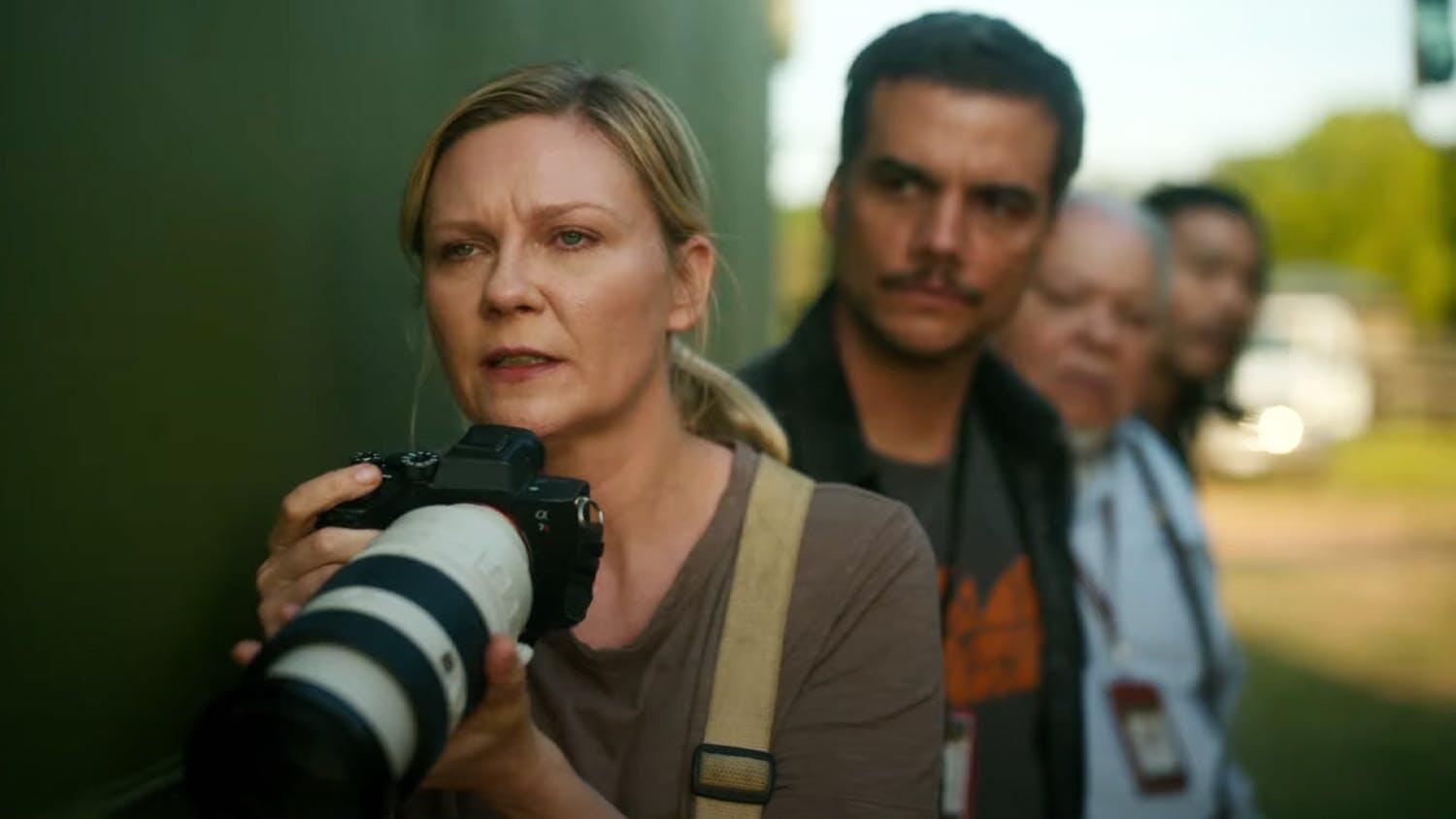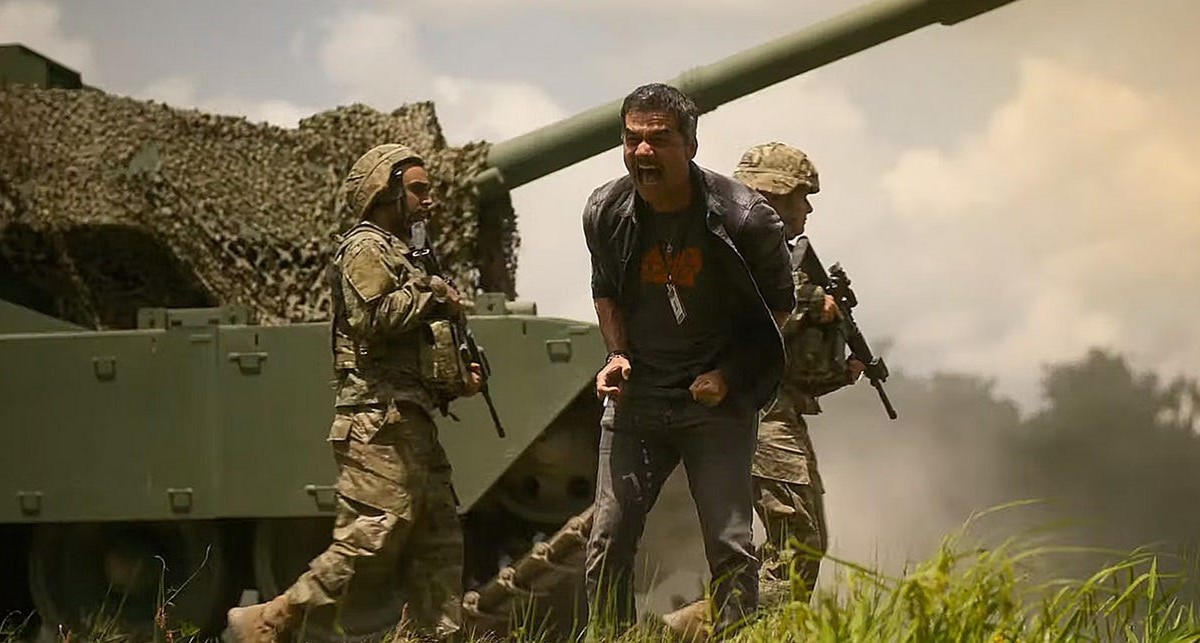by Pauline Kael
In Batman, the movement of the camera gives us the sensation of swerving (by radar) through the sinister nighttime canyons of Gotham City. We move swiftly among the forbidding, thickly clustered skyscrapers and dart around the girders and pillars of their cavelike underpinnings. This is the brutal city where crime festers—a city of alleys, not avenues. In one of these alleys, Bruce Wayne as a child watched, helpless, as his parents were mugged and senselessly shot down. Now a grown man and fabulously wealthy, Bruce (Michael Keaton) patrols the city from the rooftops. He has developed his physical strength to the utmost, and, disguised in body armor, a cowl, and a wide-winged cape, and with the aid of a high-tech arsenal, he scales buildings and swoops down on thugs and mobsters—Batman.
There’s a primitive visual fascination in the idea of a princeling obsessed with vengeance who turns himself into a creature of the night, and the director, Tim Burton, has given the movie a look, a tone, an eerie intensity. Burton, who’s thirty, has a macabre sensibility, with a cheerfulness that’s infectious; his three films (Pee-wee’s Big Adventure and Beetlejuice are the other two) get you laughing at your own fear of death.
Seen straight on, the armored Batman is as stiff and strong-jawed as a Wagnerian hero. His cowl-mask has straight-up sides that end in erect ears; he gives the impression of standing at attention all the time. (He’s on guard duty.) But something else is going on, too. The eye slits reveal only the lower part of his eyes—you perceive strange, hooded flickers of anger. When Batman is in motion, what you see can recall the movies, such as The Mark of Zorro and the 1930 mystery comedy The Bat Whispers, that the eighteen-year-old cartoonist Bob Kane had in mind when he concocted the comic-book hero, in 1939. Though the Tim Burton film is based on Kane’s characters, it gets some of its funky, nihilistic charge from more recent “graphic novels” about Batman, like Frank Miller’s 1986 The Dark Knight Returns and Alan Moore’s 1988 The Killing Joke. This powerfully glamorous new Batman, with sets angled and lighted like film noir, goes beyond pulp; it gallops into the cocky unknown.
In the movie’s absurdist vision, Batman’s antagonist is the sniggering mobster Jack Napier (Jack Nicholson), who turns into the leering madman the Joker. Clearly, Batman and the Joker are intended to represent good and evil counterparts, or, at least, twin freaks, locked together in combat; it was Jack Napier who made an orphan of Bruce Wayne, and it was Batman who dropped Jack into the vat of toxic chemicals that disfigured him. That’s the basic plan. But last year’s writers’ strike started just as the movie was set to go into production, and the promising script, by Sam Hamm (it reads beautifully), never got its final shaping; the touching up that Warren Skaaren (and uncredited others) gave it didn’t develop the characters or provide the turning points that were needed. With the young hipster Keaton and the aging hipster Nicholson cast opposite each other, we expect an unholy taunting camaraderie—or certainly some recognition on Batman’s part that he and the Joker have a similarity. And we do get a tease now and then: when the two meet, their actions have the formality of Kabuki theatre. But the underwritten movie slides right over the central conflict: good and evil hardly know each other.
At times, it’s as if pages of the script had drifted away. The mob kingpin (Jack Palance, in a hearty, ripe performance) is toppled by Jack Napier, who moves to take control of the city, but we’re not tipped to what new corruption he has in mind. We wait for the moment when the photojournalist Vicki Vale (Kim Basinger), who’s in love with Bruce Wayne and is drawn to Batman, will learn they’re the same person. She’s just about to when the scene (it’s in her apartment) is interrupted by the Joker, who barges in with his henchmen—we expect him to carry her away. The revelation of Batman’s identity is suspended (we never get to see it), and the Joker trots off without his prize. After this double non-whammy, a little air seems to leak out of the movie. And it’s full of these missed moments; the director just lets them go. Vicki and Bruce, dining together, are seated at opposite ends of an immense banquet table in a baronial hall in Wayne Manor; two thousand years of show business have prepared us for a zinging payoff—we feel almost deprived when we don’t get it. Yet these underplayed scenes have a pleasing suggestiveness. The dinner scene, for example, shows us that Bruce is flexible, despite his attraction to armor. (He collects it.) And Vicki quickly realizes that the Bruce Wayne-Batman identity is less important than the question Is he married only to his Batman compulsion or is he willing to share his life with her?
The movie has a dynamics of feeling; it has its own ache. Michael Keaton’s poor-little-rich-boy hero is slightly dissociated, somewhat depressed, a fellow who can take his dream vehicle, the Batmobile, for granted. How do you play a guy who likes to go around in a bat costume? Keaton has thought out this fellow’s hesitations, his peculiarity, his quietness. In some situations, the unarmed Bruce is once again a passive, helpless kid. (In a triste scene at night, he hangs by his ankles on gym equipment, rocking softly—trying to lull himself to sleep.) Keaton’s Bruce-Batman is really the only human being in the movie; he gives it gravity and emotional coloring. This is a man whose mission has taken over his life. The plangent symphonic score, by Danny Elfman, might be the musical form of his thoughts; it’s wonderfully morose superhero music.
When Nicholson’s Joker appears for the first time, the movie lights up like a pinball machine: the devil has arrived. (Nicholson is playing the role Keaton played in Beetlejuice.) The Joker is marvellously dandified—a fashion plate. The great bohemian chapeaus and the playing-card zoot suits, in purple, green, orange, and aqua, that Bob Ringwood has designed for him have a harlequin chic. They’re very like the outfits the illustrator Brian Boland gave the character in The Killing Joke, and Nicholson struts in them like a homicidal minstrel, dancing to hurdy-gurdy songs by Prince— the Joker’s theme music. But the grin carved into the Joker’s face doesn’t have the horror of the one on Conrad Veidt’s face in the 1927 The Man Who Laughs (where Bob Kane acknowledges he took it from). Veidt played a man who never forgot his mutilation. Nicholson’s Jack Napier is too garish to suffer from having been turned into a clown; the mutilation doesn’t cripple him, it fulfills him. And so his wanting to get back at Batman is just crazy spite.
This may work for the kids in the audience, and the Joker’s face stirs up a child’s confused fear of—and delight in— clowns. (They’re like kids made hideous and laughed at.) But possibly the Joker’s comic-book dazzle diminishes the film’s streak of morbid grandeur—the streak that links this Batman to the reverbs that The Phantom of the Opera and The Hunchback of Notre Dame set off in us. When the adversaries have their final, moonlight encounter, among the gargoyles on the bell tower of Gotham’s crumbling, abandoned cathedral, they could be like the Phantom of the Opera split in two, but there’s pain in Keaton, there’s no pain in Nicholson. The Joker may look a little like Olivier as the John Osborne vaudevillian, but he isn’t human: he’s all entertainer, a glinting-eyed cartoon—he’s still springing gags after he’s dead. This interpretation is too mechanical to be fully satisfying. And is Nicholson entertainer enough? He doesn’t show the physical elegance and inventiveness we may hope for.
The master flake Tim Burton understands what there is about Batman that captures the moviegoer’s imagination. The picture doesn’t give us any help on the question of why Bruce Wayne, in creating an alternate identity, picked a pointy-eared, satanic-looking varmint. (Was it simply to gain a sense of menace and to intimidate his prey?) But Burton uses the fluttering Batman enigmatically, playfully. He provides potent, elusive images that draw us in (and our minds do the rest). There may be no more romantic flight of imagination in modern movies than the drive that Vicki and Batman take, by Batmobile, rocketing through a magical forest. Yet though we’re watching a gothic variation of the lonely-superhero theme, we’re never allowed to forget our hero’s human limitations. He’s a touchingly comic fellow. When he’s all dressed up in his bat drag, he still thinks it necessary to identify himself by saying, in a confidential tone, “I’m Batman.”
The movie’s darkness is essential to its hold on us. The whole conception of Batman and Gotham City is a nighttime vision—a childlike fantasy of the big city that the muggers took over. The caped crusader who can find his way around in the miasmal dark is the only one who can root out the hoods. The good boy Batman has his shiny-toy weapons (the spiked gauntlets, the utility belt equipped with projectile launcher, even the magnificent Batwing fighter plane), but he’s alone. The bad boys travel in packs: the Joker and his troupe of sociopaths break into the Flugeiheim Museum, merrily slashing and defiling the paintings—the Joker sees himself as an artist of destruction.
Batman and the Joker are fighting for the soul of the city that spawned them. We see what shape things are in right from the opening scenes. Gotham City, with its jumble of buildings shooting miles and miles up into the dirty skies, is the product of uncontrolled greed. Without sunshine or greenery, the buildings look like derelicts. This is New York City deliberately taken just one step beyond the present; it’s the city as you imagine it when you’re really down on it. It’s Manhattan gone psycho. But even when you’re down on it you can get into your punk fantasies about how swollen it is, how blighted and yet horribly alive.
The designer, Anton Furst, seems to have got into that kind of jangled delight, putting together domes and spires, elongated tenements, a drab city hall with statues bowed down in despair, and streets and factories with the coalmine glow of the castles and battlements in Chimes at Midnight. Gotham City has something of the sculptural fascination of the retro-future cities in Blade Runner and Brazil—it’s like Fritz Lang’s Metropolis corroded and cankered. If H. G. Wells’ Time Machine took you there, you’d want to escape back to the present. Still, you revel in this scary Fascistic playground: the camera crawls voluptuously over the concrete and the sewers, and the city excites you— it has belly-laugh wit.
When Gotham City celebrates its two-hundredth birthday, the big parade balloons are filled with poison gas—an inspiration of the Joker’s. (He rides on a float, jiggling to the music; his painted red grin has wing tips.) Paranoia and comic-book cheesiness don’t defeat Tim Burton; he feels the kick in them—he likes their style. The cinematographer, Roger Pratt, brings theatrical artifice to just about every shot—a high gorgeousness, with purples and blacks that are like our dream of a terrific rock concert. The movie even has giant spotlights (and the Batsignal from the original comic books). This spectacle about an avenging angel trying to protect a city that’s already an apocalyptic mess is an American variant of Wings of Desire. It has a poetic quality, but it moves pop fast. The masked man in the swirling, windblown cape has become the hero of a comic opera that’s mean and anarchic and blissful. It has so many unpredictable spins that what’s missing doesn’t seem to matter much. The images sing.
The New Yorker, July 10, 1989




